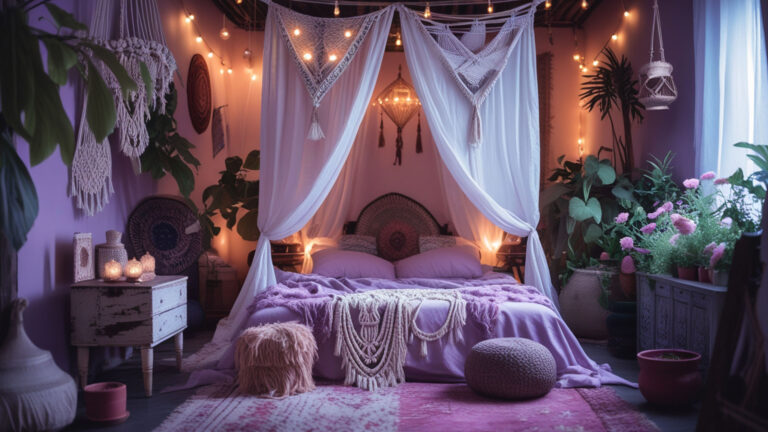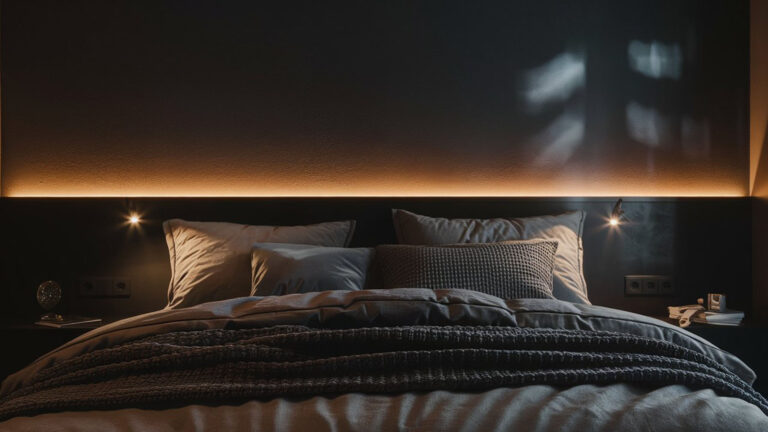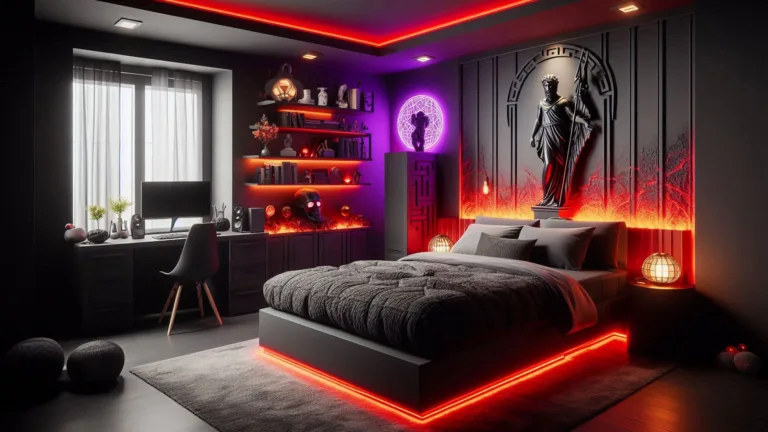How to Choose the Best Color Palette for Bedroom
Welcome to the beginning of your journey towards creating the perfect bedroom oasis! Choosing the right color palette for your bedroom is more than just selecting hues that look good together; it’s about curating an environment that promotes relaxation, tranquility, and personal well-being.
In this post, we’ll delve into the importance of selecting the right colors for your bedroom and how they can impact your mood and overall atmosphere.
- How to Choose the Best Color Palette for Bedroom
- Understanding Color Psychology
- Assessing Your Bedroom's Characteristics
- Exploring Popular Bedroom Color Palettes
- Harmonizing Colors for Balance
- Practical Tips for Bedroom Color Choices
- Additional Considerations for Your Bedroom Design
- Case Studies and Examples
- Conclusion: Creating Your Dream Bedroom with Confidence
- Additional Resources
How to Choose the Best Color Palette for Bedroom

Importance of Choosing the Right Color Palette
Your bedroom is your sanctuary, a place where you retreat after a long day to unwind and recharge. The colors you surround yourself with in this space can significantly influence your emotions and mental state.
A carefully chosen color palette can evoke feelings of calmness, serenity, and comfort, helping you to relax and sleep better at night. On the other hand, the wrong colors can disrupt your sense of peace and harmony, leading to restlessness and discomfort.
Impact of Color on Mood and Atmosphere
Color psychology plays a vital role in interior design, as different colors have the power to evoke specific emotions and set the tone for a room.
Soft, muted tones like blues and greens are known for their calming effects, perfect for creating a serene and tranquil bedroom environment.
Warm hues such as earthy browns and soft neutrals can add a cozy and inviting feel to your space, while bold accent colors inject personality and energy into the room.
By understanding the impact of color on mood and atmosphere, you can make informed decisions when selecting the perfect color palette for your bedroom, ensuring a space that not only looks beautiful but also feels like a peaceful retreat tailored to your needs.
So, let’s dive in and discover the colors that will help you unlock the tranquility you deserve in your bedroom sanctuary.
Understanding Color Psychology
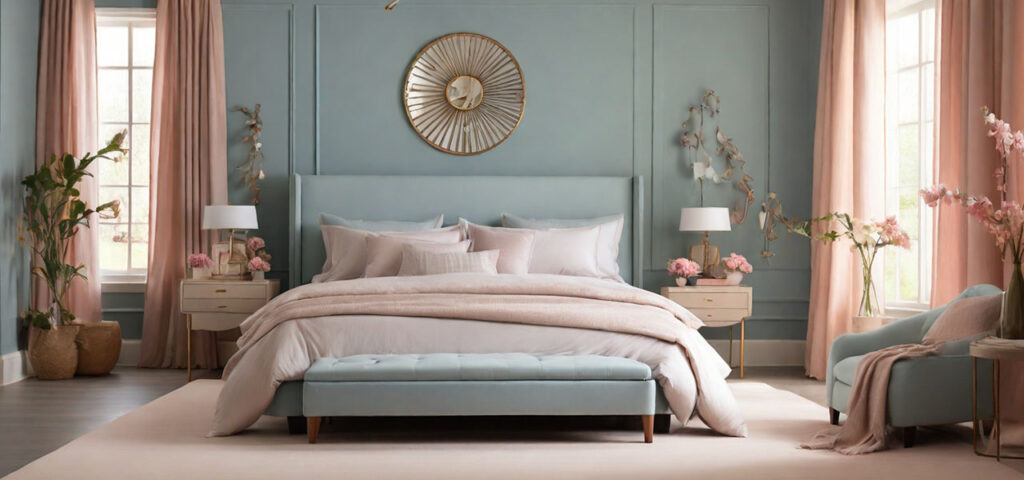
Overview of Color Psychology
Color psychology is the study of how colors affect human behavior, emotions, and mood.
It’s a fascinating field that delves into the subconscious impact of different hues on our psyche.
When it comes to designing your bedroom, tapping into the principles of color psychology can help you create a space that promotes relaxation and rejuvenation.
How Different Colors Affect Mood
Each color has its own unique psychological properties that can evoke specific emotions and feelings.
For instance, cool tones like blue and green are often associated with tranquility and calmness, making them ideal choices for a serene bedroom atmosphere.
Warm colors like red and orange, on the other hand, can evoke feelings of warmth and energy but may be too stimulating for a restful sleep environment.
Considerations for Bedroom Spaces
When applying color psychology to your bedroom, it’s essential to consider the function of the space.
Bedrooms should be designed to promote relaxation and sleep, so opting for soothing and calming colors is usually the best approach.
Additionally, factors such as natural light, room size, and existing decor should also be taken into account when selecting your color palette.
Lighter shades can make a small bedroom feel more spacious, while darker hues can add a sense of coziness to larger spaces.
By understanding how different colors affect mood and considering the unique characteristics of your bedroom space, you can harness the power of color psychology to create a harmonious and inviting environment that promotes restful sleep and overall well-being.
So, let’s dive deeper into the world of color and discover the perfect palette for your bedroom sanctuary.
Assessing Your Bedroom’s Characteristics
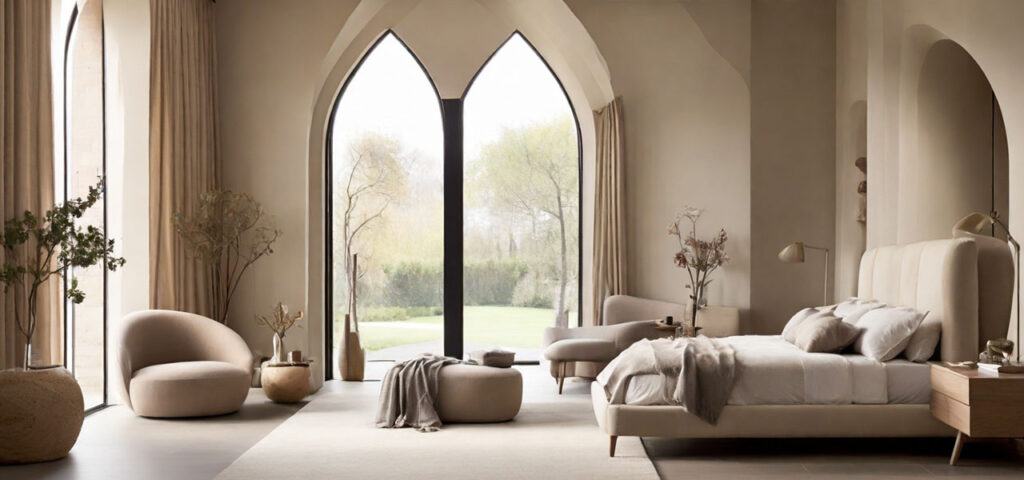
Before diving into color swatches and paint samples, it’s crucial to assess your bedroom’s unique characteristics.
Understanding factors such as natural light, room size, layout, and existing decor will guide you in selecting the perfect color palette to create a harmonious and inviting space tailored to your preferences.
Natural Light and Lighting Conditions
Take note of how natural light filters into your bedroom throughout the day. Rooms with ample natural light can handle darker hues without feeling cramped, while spaces with limited light may benefit from lighter shades to enhance brightness.
Consider the direction your windows face and how it affects the intensity and quality of light in the room.
Additionally, assess artificial lighting sources and their impact on the overall ambiance, as different bulbs can cast varying tones and shadows.
Size and Layout of the Bedroom
The size and layout of your bedroom play a significant role in determining the most suitable color palette.
Lighter colors can make a small bedroom feel more spacious and airy, while darker tones can add warmth and coziness to larger spaces.
Evaluate the proportions of your room and consider how different colors will interact with its dimensions.
Additionally, take note of architectural features such as alcoves, angles, and built-in shelving, as they can influence color placement and visual impact.
Existing Furniture and Decor
Consider the existing furniture, decor, and flooring in your bedroom when selecting a color palette.
Aim for a cohesive look by choosing colors that complement or enhance the existing elements in the room.
For example, if you have wooden furniture with warm undertones, consider selecting colors that harmonize with these hues.
Alternatively, use contrasting colors to create visual interest and focal points within the space.
By carefully assessing your bedroom’s characteristics, including natural light, size, layout, and existing decor, you can make informed decisions when choosing the perfect color palette.
By harmonizing these elements, you’ll create a space that reflects your personal style and promotes relaxation and tranquility—a true haven for rest and rejuvenation.
Exploring Popular Bedroom Color Palettes
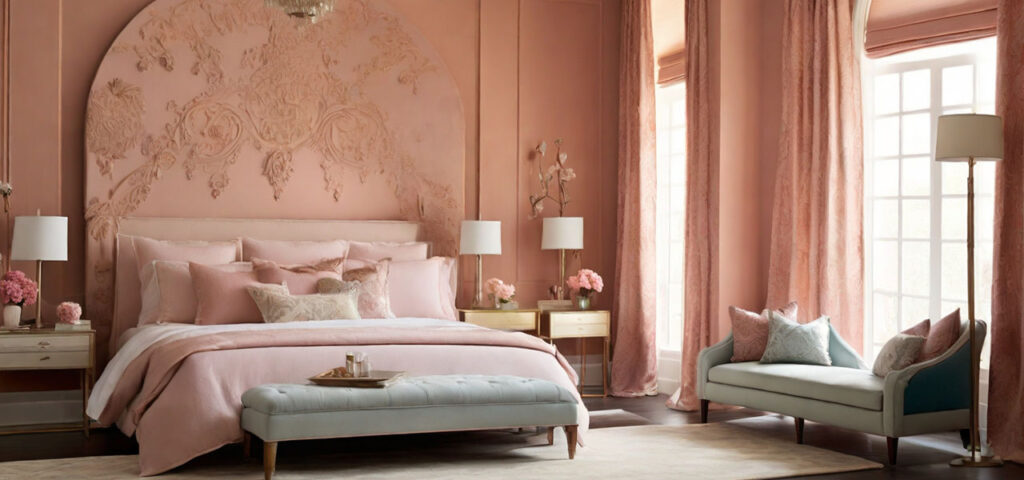
When it comes to transforming your bedroom into a serene sanctuary, selecting the right color palette is key.
Let’s take a journey through some of the most popular and soothing color schemes that can elevate your space to new levels of comfort and style.

Neutral Tones: Timeless Elegance
Neutral tones such as whites, beiges, and greys are perennial favorites for bedrooms due to their timeless elegance and versatility.
These understated hues provide a clean and sophisticated backdrop that allows other elements in the room to shine.
Neutral palettes are perfect for creating a calm and serene atmosphere, making them an excellent choice for those seeking a minimalist or contemporary aesthetic.
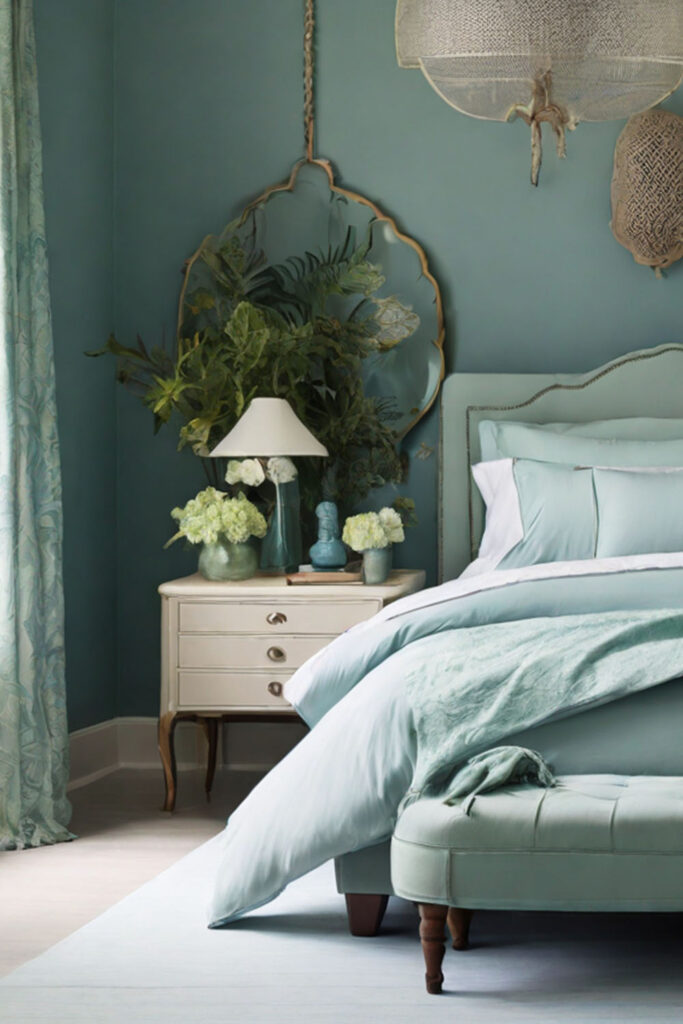
Serene Blues and Greens: Tranquility and Relaxation
Blues and greens are renowned for their calming and soothing qualities, making them ideal choices for bedroom color palettes.
Soft shades of blue evoke a sense of tranquility and serenity, reminiscent of the sky or ocean.
Similarly, greens, particularly those inspired by nature, can create a peaceful and rejuvenating environment.
Whether you opt for a tranquil aqua or a verdant sage, incorporating blues and greens into your bedroom will help promote relaxation and restful sleep.
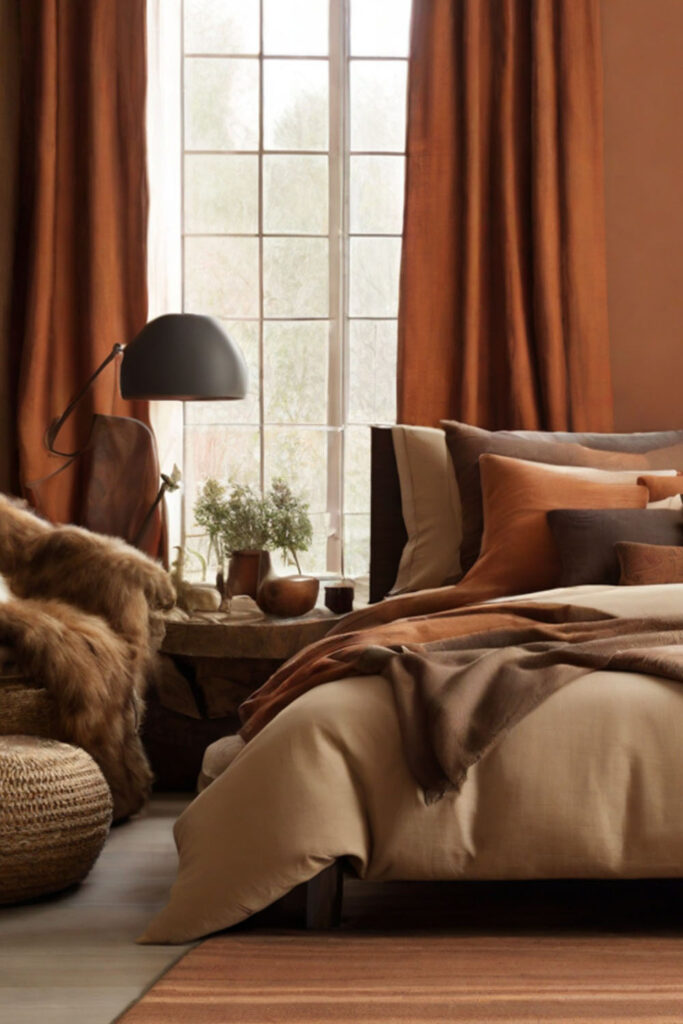
Warm Earth Tones: Cozy and Inviting
Warm earth tones such as browns, terracottas, and taupes exude a sense of warmth and coziness, perfect for creating a snug and inviting bedroom retreat.
These rich and earthy hues evoke feelings of comfort and security, making them well-suited for creating a cocoon-like atmosphere.
Pair warm earth tones with natural materials like wood and rattan to enhance the rustic charm of your bedroom sanctuary.
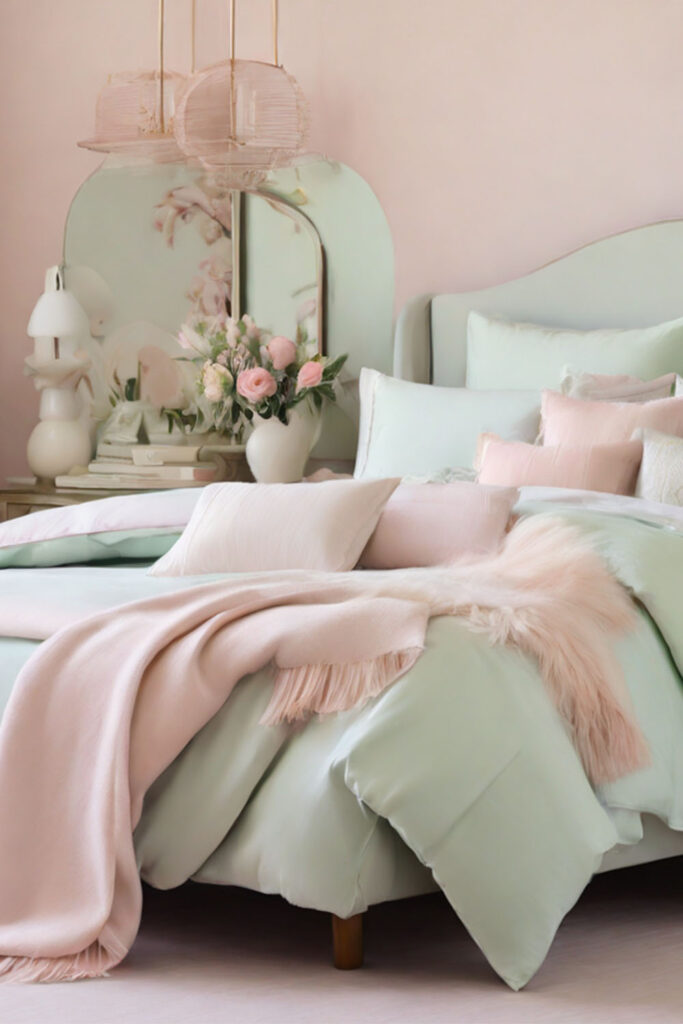
Soft Pastels: Delicate and Soothing
Soft pastel hues like blush pink, pale lavender, and mint green add a delicate and feminine touch to any bedroom space.
These gentle shades create a serene and soothing atmosphere, ideal for unwinding after a long day.
Pastel palettes can also evoke a sense of nostalgia and whimsy, making them a popular choice for romantic or vintage-inspired bedrooms.

Bold Accents: Adding Drama and Personality
For those craving a bit of drama and personality in their bedroom decor, incorporating bold accent colors is the perfect solution.
Whether it’s a vibrant pop of red, a regal purple accent wall, or a daring dose of emerald green, bold hues can inject energy and personality into your space.
Use accent colors sparingly to create focal points and add visual interest without overwhelming the room.
In conclusion, choosing the perfect color palette for your bedroom is all about creating a space that reflects your personality and promotes relaxation.
Whether you prefer the timeless elegance of neutral tones, the tranquil vibes of blues and greens, the cozy warmth of earthy hues, the delicate beauty of soft pastels, or the bold drama of accent colors, there’s a palette out there waiting to transform your bedroom into a stylish and serene sanctuary.
So go ahead, experiment with different color combinations, and create a space that speaks to your soul.
Harmonizing Colors for Balance

Achieving a balanced color palette in your bedroom is essential for creating a harmonious and visually pleasing space.
By carefully selecting dominant colors, incorporating accent hues, and playing with textures and patterns, you can create a cohesive and inviting environment that reflects your personal style.
Choosing a Dominant Color
Start by choosing a dominant color that sets the tone for your bedroom design.
This primary hue will serve as the foundation of your color palette and should reflect the mood and atmosphere you want to create.
Whether it’s a calming blue, a warm beige, or a sophisticated grey, the dominant color will tie the room together and provide a sense of unity.
Accent Colors for Visual Interest
Once you’ve selected a dominant color, it’s time to add visual interest with accent colors.
Accent hues can be used sparingly to create focal points and add depth to your color scheme.
Consider incorporating complementary or contrasting colors to create dynamic visual effects.
For example, pair a soft blue with a bold coral for a pop of color, or combine shades of green with touches of gold for a luxurious feel.
Incorporating Textures and Patterns
In addition to color, textures and patterns play a crucial role in adding dimension and interest to your bedroom design.
Experiment with different fabrics, such as velvet, linen, or silk, to create visual and tactile contrast.
Incorporate patterns, such as stripes, florals, or geometric prints, to add personality and flair to your space.
Just remember to balance bold patterns with more subtle textures to avoid overwhelming the room.
By harmonizing colors for balance and incorporating textures and patterns, you can create a bedroom design that is both visually appealing and inviting.
Whether you prefer a calming and serene atmosphere or a bold and vibrant aesthetic, thoughtful color choices and design elements will help you achieve the perfect balance in your bedroom sanctuary.
Practical Tips for Bedroom Color Choices

Selecting the perfect color for your bedroom can feel daunting, but with a few practical tips, you can simplify the process and ensure a space that reflects your style and promotes relaxation.
Testing Paint Samples
Before committing to a color, it’s crucial to test paint samples in your bedroom space.
Paint can look different under various lighting conditions, so it’s essential to see how your chosen hue appears during different times of the day.
Paint small sections of the wall and observe how the color interacts with natural and artificial light.
This hands-on approach allows you to make an informed decision and ensures that you’ll love the final result.
Considering Long-Term Preferences
While it’s tempting to follow trends, consider your long-term preferences when selecting bedroom colors.
Opt for hues that resonate with you personally and create a space that feels timeless and inviting.
Neutral tones and soft pastels are classic choices that can adapt to evolving tastes and decor styles over time.
By choosing colors that you genuinely love, you’ll ensure a bedroom that remains a soothing sanctuary for years to come.
Incorporating Personal Style
Your bedroom should be a reflection of your unique personality and style.
Incorporate personal touches, such as favorite colors, artwork, or decor items, to infuse the space with warmth and character.
Whether you prefer a minimalist aesthetic or a maximalist approach, don’t be afraid to experiment and make the space your own.
By infusing your personality into the design, you’ll create a bedroom that feels like a true retreat from the world.
In conclusion, choosing bedroom colors doesn’t have to be overwhelming.
By testing paint samples, considering long-term preferences, and incorporating personal style, you can create a space that is both beautiful and functional.
Trust your instincts, and remember that the most important thing is to create a bedroom that feels like home—a place where you can relax, unwind, and recharge.
Additional Considerations for Your Bedroom Design
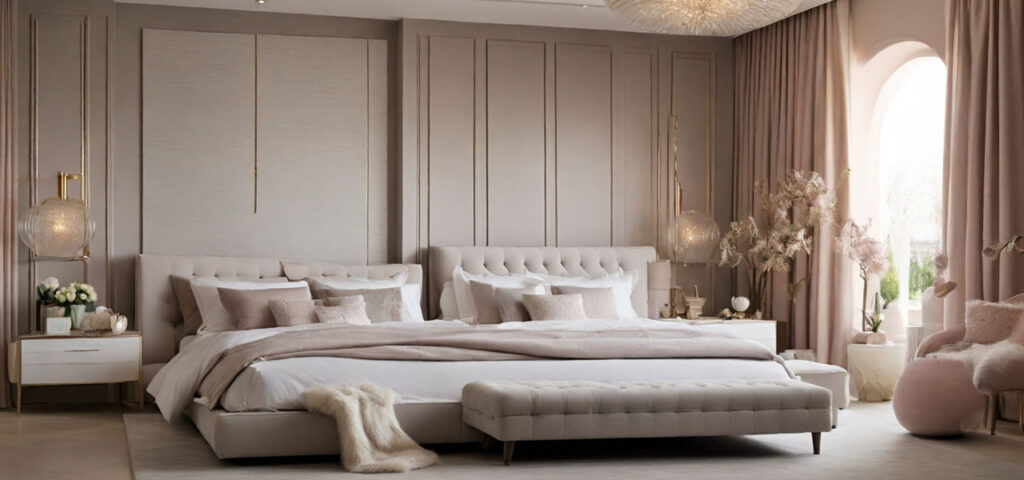
While choosing the perfect color palette is a crucial step in designing your dream bedroom, there are several additional factors to consider to ensure a space that is both functional and beautiful.
Trends vs. Timelessness
When selecting colors and decor for your bedroom, it’s essential to strike a balance between following current trends and opting for timeless elements.
While trendy colors and patterns can add a contemporary flair to your space, they may quickly become outdated.
Consider incorporating trendy elements in small doses, such as accent pillows or wall art, while sticking to classic colors and furniture pieces for long-term appeal.
Maintenance and Durability
Consider the practicality of your chosen colors and materials in terms of maintenance and durability.
Lighter colors may require more frequent cleaning to maintain their brightness, while darker hues can hide dirt and stains more effectively.
Additionally, choose durable materials for furniture and flooring that can withstand daily wear and tear, ensuring that your bedroom remains beautiful and functional for years to come.
Flexibility for Future Updates
Finally, think about the flexibility of your bedroom design for future updates and changes.
While you may love your current color palette and decor scheme, your tastes and preferences may evolve over time.
Opt for design elements that can easily be updated or replaced, such as removable wallpaper or interchangeable accessories, allowing you to refresh your space without major renovations.
By considering these additional factors, you can create a bedroom design that is not only visually appealing but also practical and adaptable to your changing needs and preferences.
Whether you prefer timeless elegance or contemporary flair, thoughtful consideration of these elements will ensure a bedroom that is truly your own sanctuary.
Case Studies and Examples

Let’s dive into real-life examples of successful bedroom color palettes to inspire your own design journey.
From subtle neutrals to bold statements, these case studies showcase the transformative power of color in creating a harmonious and inviting bedroom sanctuary.
Real-Life Examples of Successful Bedroom Color Palettes
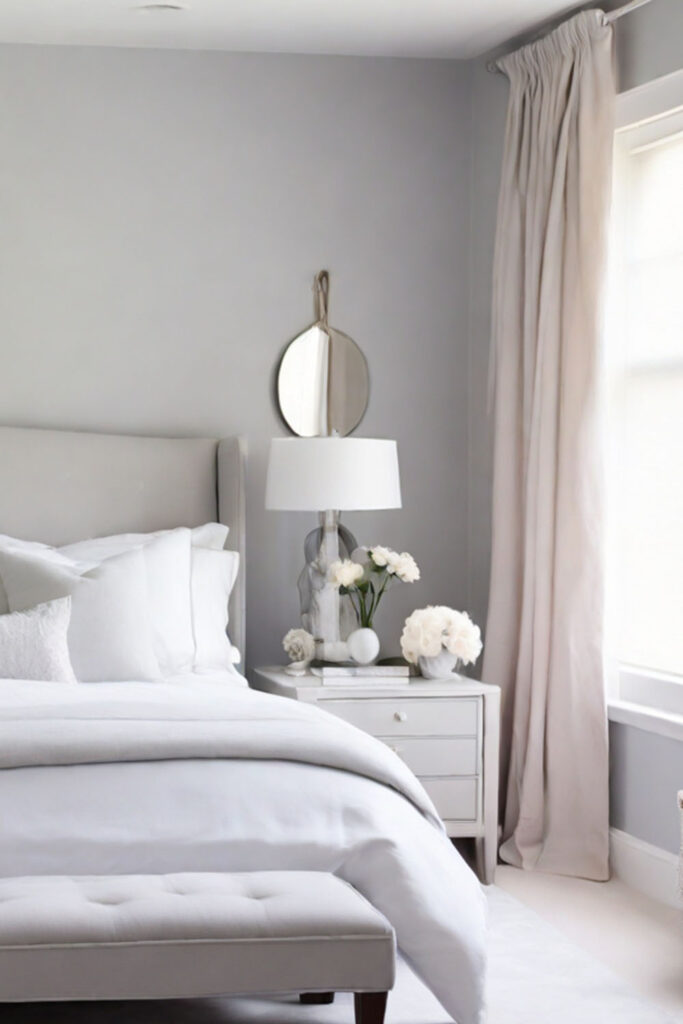
Serene Neutrals: Sarah’s bedroom was transformed from cluttered chaos to tranquil retreat with a palette of soft greys and whites. By painting the walls a soothing shade of pale grey and incorporating crisp white linens and furnishings, Sarah created a serene and cohesive space that feels light and airy.
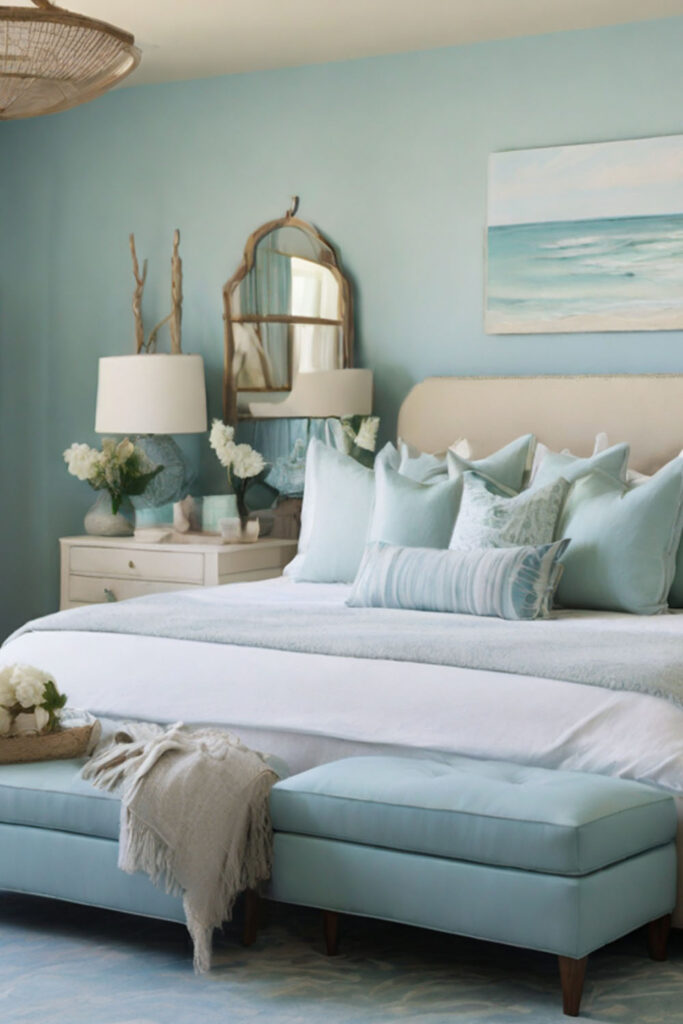
Coastal Vibes: Tom and Emily wanted to bring a sense of the beach into their inland home. They achieved this by using a palette of soft blues, sandy neutrals, and seafoam greens. By painting an accent wall in a calming ocean blue and adding coastal-inspired decor accents, they created a bedroom that feels like a seaside escape.
Before-and-After Transformations
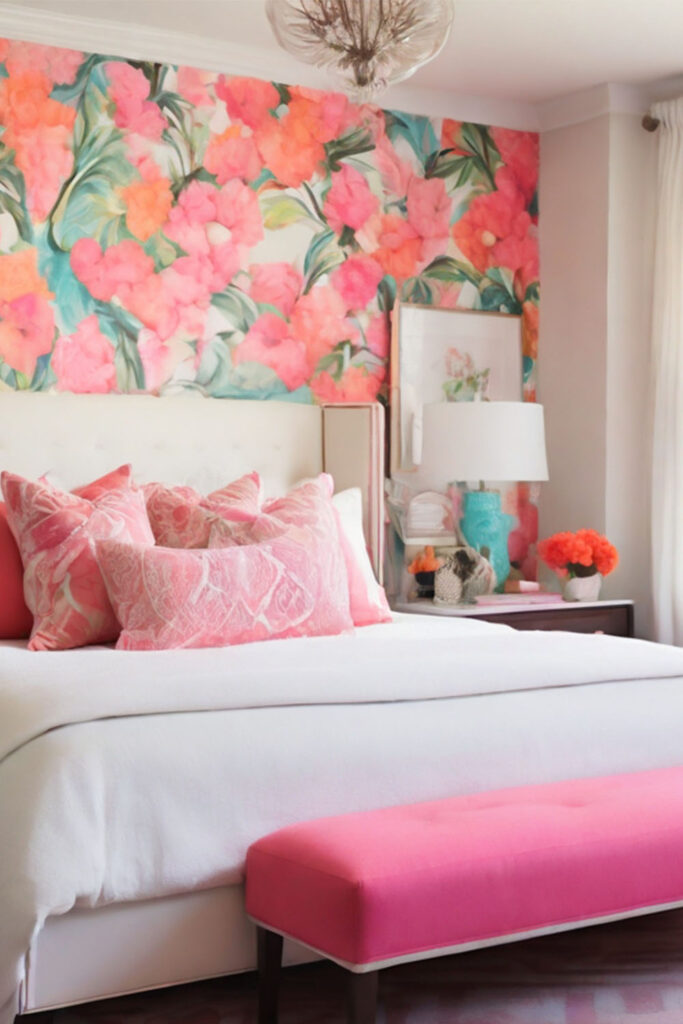
Linda’s Bedroom Makeover: Linda’s bedroom was stuck in the 80s with outdated wallpaper and dark wood furniture. She transformed the space by painting the walls a fresh, crisp white and adding pops of color with vibrant bedding and accessories. The result? A bright and cheerful bedroom that feels modern and inviting.
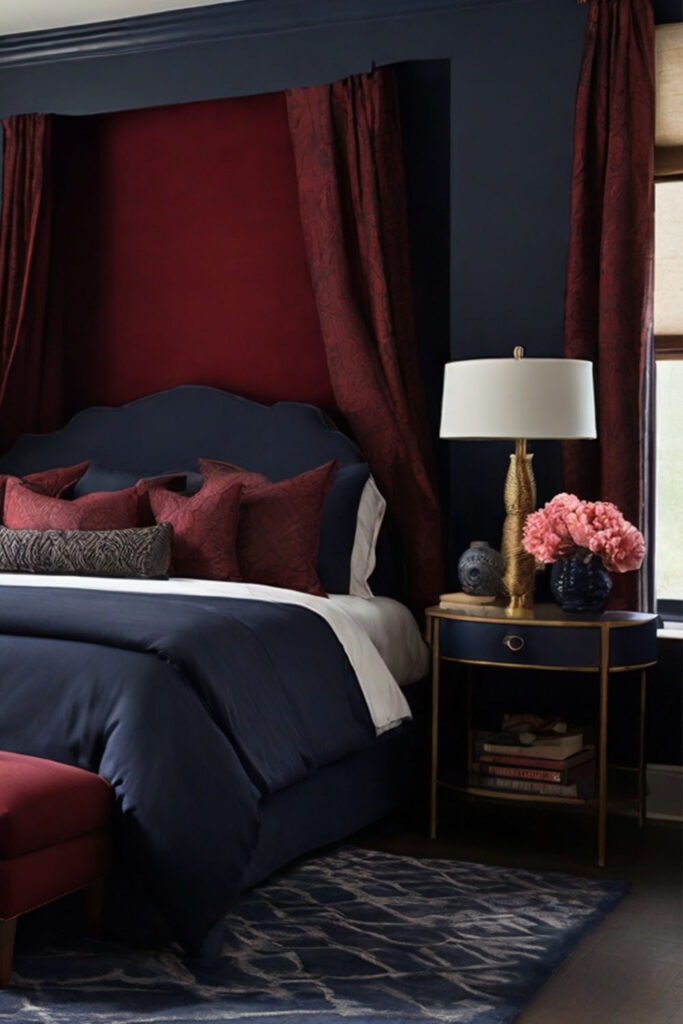
Mark’s Bold Statement: Mark wanted to make a bold statement in his bedroom, so he opted for a dramatic color palette of deep navy blue and rich burgundy. By painting the walls a dark navy blue and incorporating burgundy accents through bedding and curtains, he created a moody and sophisticated space that exudes style.
These real-life examples demonstrate the transformative power of color in bedroom design.
Whether you prefer serene neutrals, coastal vibes, or bold statements, there’s a color palette out there waiting to transform your bedroom into a stylish and inviting sanctuary.
So go ahead, experiment with color, and create a space that reflects your unique personality and style.
Conclusion: Creating Your Dream Bedroom with Confidence

As we wrap up our exploration of choosing the best color palette for your bedroom, let’s recap the key points we’ve covered and encourage you to unleash your creativity.
Summarizing Key Points
We’ve discussed the importance of understanding color psychology and how different hues can impact mood and atmosphere.
Assessing your bedroom’s characteristics, such as natural light and layout, is crucial for selecting the right color palette.
We’ve explored popular color schemes, from timeless neutrals to bold accents, and learned how to harmonize colors for balance.
Practical tips, including testing paint samples and considering long-term preferences, have been shared to simplify the decision-making process.
Additional considerations, such as trends vs. timelessness and flexibility for future updates, have been highlighted to ensure a functional and beautiful bedroom design.
Encouraging Personal Experimentation and Creativity
Remember, designing your bedroom is a personal journey that should reflect your unique style and preferences.
Don’t be afraid to experiment with different colors, textures, and patterns to create a space that feels like home.
Whether you’re drawn to serene neutrals, vibrant accents, or somewhere in between, trust your instincts and let your creativity shine.
Your bedroom is your sanctuary, so make it a place where you can relax, unwind, and recharge in style.
Applying the principles and tips discussed here, you can confidently choose the perfect color palette for your bedroom and create a space that brings you joy and comfort for years to come.
Additional Resources
Here are some insightful articles that you may find interesting and relevant to this topic.



